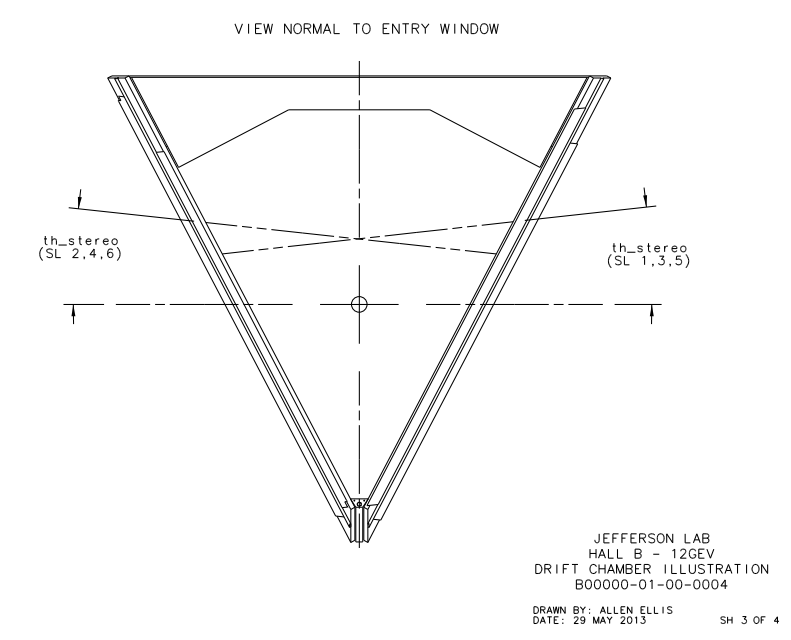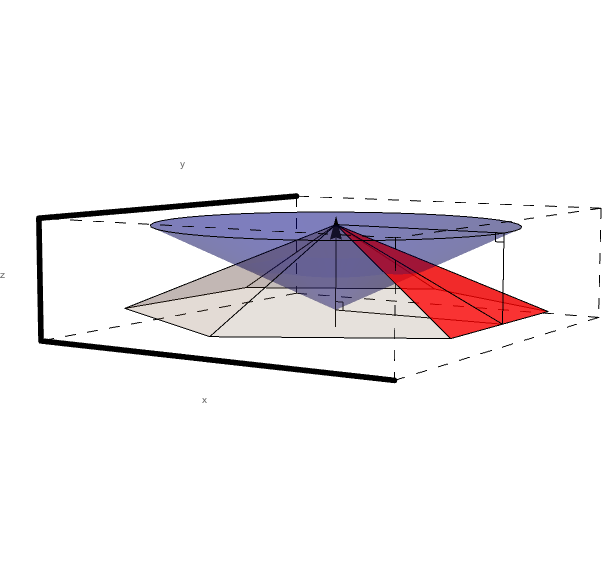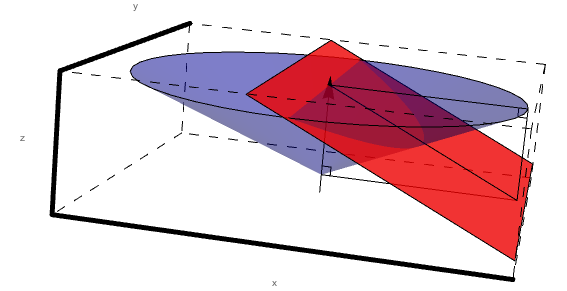Difference between revisions of "Determining wire-phi correspondance"
Jump to navigation
Jump to search




File:Conic section.png.png
| Line 2: | Line 2: | ||
| + | |||
| + | Using Mathematica, we can produce a 3D rendering of how the sectors for Level 1 would have to interact with a steady angle theta with respect to the beam line, as angle phi is rotated through 360 degrees. | ||
<center>[[File:PhiCone.png]]</center> | <center>[[File:PhiCone.png]]</center> | ||
| + | |||
| + | Looking just at sector 1, we can see that the intersection of level 1 and the cone of constant angle theta forms a conic section. | ||
<center>[[File:Projection_side_view.png]]</center> | <center>[[File:Projection_side_view.png]]</center> | ||
| Line 10: | Line 14: | ||
<center>[[File:Projection_Rear_view.png]]</center> | <center>[[File:Projection_Rear_view.png]]</center> | ||
| + | |||
| + | Following the rules of conic sections we know that the eccentricity of the conic is given by: | ||
| + | |||
| + | <center><math>\e=\frac{\sin [\beta]}{\sin[\alpha]}</math></center> | ||
| + | |||
| + | |||
| + | Where β is the angle of the plane, and α is the slant of the cone. | ||
| + | |||
| + | If the conic is an circle, e=0 | ||
| + | |||
| + | If the conic is an parabola, e=1 | ||
| + | |||
| + | If the conic is an ellipse, <math>e=\sqrt{1-\frac{b^2}{a^2}}</math> | ||
<center>[[File:Conic_section.png.png]]</center> | <center>[[File:Conic_section.png.png]]</center> | ||
Revision as of 05:18, 3 January 2017

Using Mathematica, we can produce a 3D rendering of how the sectors for Level 1 would have to interact with a steady angle theta with respect to the beam line, as angle phi is rotated through 360 degrees.
Looking just at sector 1, we can see that the intersection of level 1 and the cone of constant angle theta forms a conic section.


Following the rules of conic sections we know that the eccentricity of the conic is given by:
Where β is the angle of the plane, and α is the slant of the cone.
If the conic is an circle, e=0
If the conic is an parabola, e=1
If the conic is an ellipse,